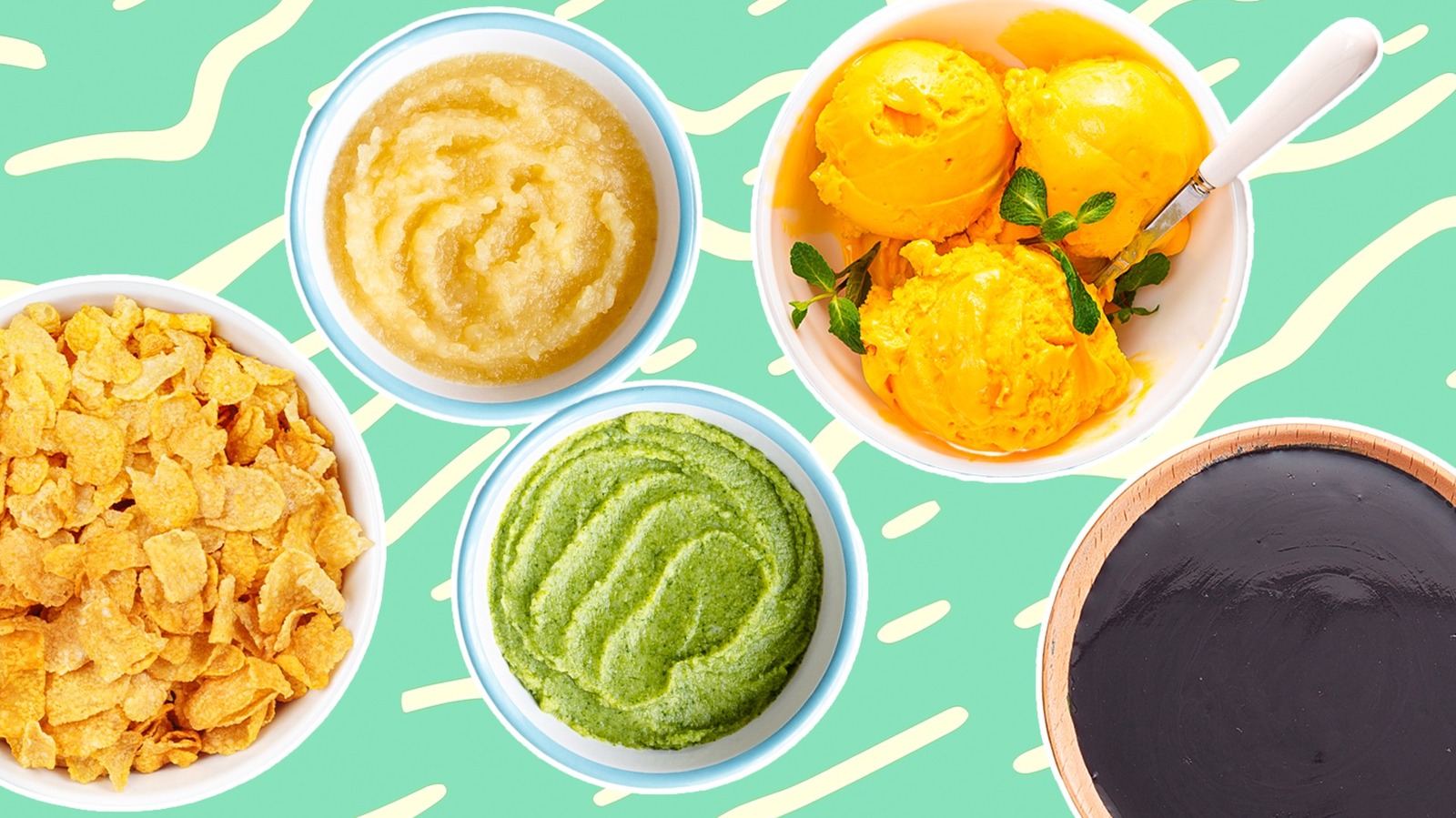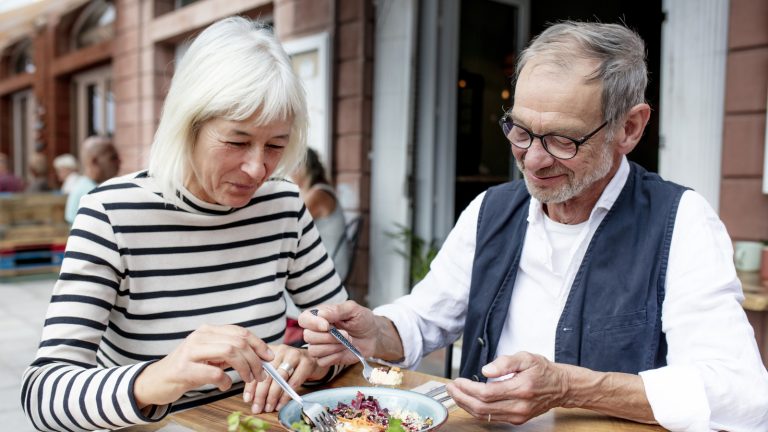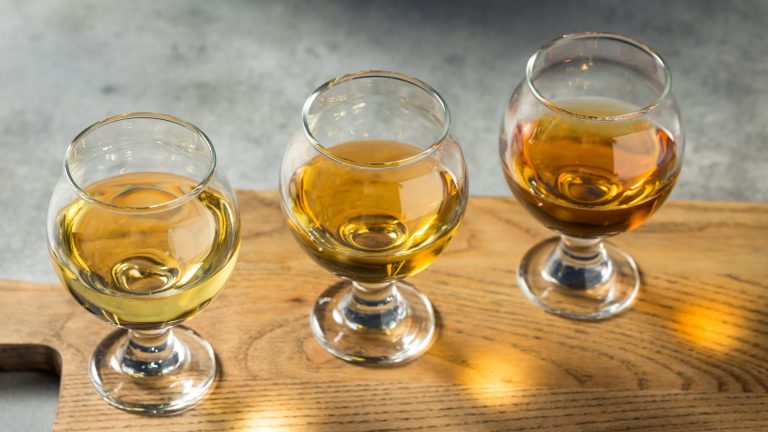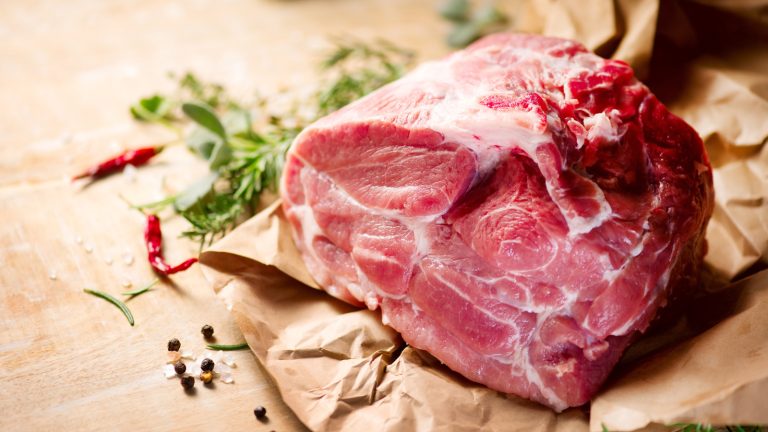In our 21st century world, we’re used to seeing food trends sweep across social media … only to disappear (and be replaced) a few days later. Unusual food stuff happens every year; for instance, 2022 was a year of food trends like vinegar drinks and Fruity Pebble-flavored everything. While some food trends have been known to displease certain celebrity chefs – Alton Brown hates the idea of elevated comfort foods – we can actually sort of see the logical progression of how some trends came into existence.
But we’re not here to talk about those. Rather, we’re here to discuss some of the least logical — and, at times, incredibly weird — food trends in history. Trust us when we say weird, too, because we mean it: We’re going to get freaky with some food things.
While we’ll touch on a few newer trends, we’ve also gone back in time (all the way to the 10th century, in one case) to discover some truly odd practices. Many odd food trends swept up popular imagination long before social media was there to help it along, after all, because as it turns out? People are largely the same as they’ve always been — meaning they’ve always liked to get weird with their food. Here are the most bizarre food trends of all time.
Jell-O salads, and putting everything into weird aspics
Foodies probably know that the idea of serving things in aspics and Jell-O was a once-popular food trend of the 1950s – though both have thankfully fallen out of favor. Interestingly enough, it actually appears to be a much older idea, with at least one 10th century recipe for a fish-and-saffron aspic dish found online.
Now, originally, there was a practical reason for sealing everything in aspic: it slowed bacterial growth. While this makes a lot of sense, as early as the 1500s, personal chefs for the high-and-mighty decided it was also a brilliant way to show off their artistic skills. Consequently, this was the case for literally hundreds of years. Food carefully arranged and preserved in gelatin were works of art, as well as a sign you were dining with someone obscenely wealthy.
As for American cuisine, the idea really took off thanks to Jell-O, which took the creation of gelatin from time-consuming to instant. Of course, the use of instant foods was considered unbecoming to a good, 1950s-era housewife. So to make Jell-O salads more impressive, the centuries-old traditions of gelatin as art was revived. Molds became popular, with savory ingredients and Jell-O flavors all the rage. The Jell-O salad and aspic-use trend lasted into the 1970s, before tastes and ideas about meals (mostly) changed.
Raw water was apparently a great idea
If “The Oregon Trail” taught us anything, it’s that drinking untreated water can lead to things like dysentery. However, there’s a whole lot of people who apparently weren’t subjected to this series of randomized deaths, which was proved during the raw water movement of the 2010s. Starting on a smaller scale before getting widespread recognition around 2018, there were two sides to the argument.
Many chugging glasses of untreated water were under the belief that lead pipes were everywhere and fluoride was bad, though it didn’t stop there. Some insisted they were doing it to prevent exposure to the mind control chemicals and birth control drugs in public water, and others cited things like an improved texture and more efficient hydration. Meanwhile, scientists, microbiologists, and public health officials warned against the trend.
Consumers were reminded that when water is treated, it’s a process that removes things like the bacteria that causes E. coli (and other diseases), along with other microscopic particles from potentially contaminated areas. This can include waste from nearby livestock, as well as industrial processes. The difference between access to treated water is essentially the difference between having a disease like cholera, versus not having that disease. It’s simply bizarre that so many chose to hop into the cholera line, but those folks clearly wouldn’t have made it to Oregon.
Cereal could stop sexual desires (in theory, at least)
History is full of people who want nothing more than to tell others how to live their lives, which brings us to a super-weird time in the mid- and late 19th century. This trend involved eating bland breakfast cereal, hoping to make living a sin-free life easier — and by that, we’re saying they specifically meant avoiding supposedly sexual-based sins of all kinds.
Several people who arguably revolutionized the country’s food landscape drove this trend, including graham cracker inventor Sylvester Graham. He was a minister who believed bland food lessened a person’s tendencies toward impure thoughts, which in turn led to everything from mental illness to eternal damnation. By the 1830s, there were a lot of people following his advice, with Dr. John Kellogg showing up on the scene not long afterwards.
Kellogg’s teachings were wildly popular. In fact, along with selling Corn Flakes, Kellogg popularized the idea he called biological living. This echoed Graham’s beliefs about sugar and spice leading to, well, everything nice. In the end, things sort of fell apart around this food trend, when consumers realized Kellogg’s cereal tasted much better with sugar.
Olestra was added to numerous foods, because what could go wrong?
There are a lot of potato chips and chip flavors that no one remembers in the 2020s. But if you were of snacking age in the 1990s and tried some of the various fat-free chips that were all the rage at that time, it’s safe to say you remember chips made with olestra. More than that, you might recall them because olestra-made chips were known for sending folks frantically dashing to the bathroom.
Now, there’s an old saying that if something sounds too good to be true, it probably is — and that appears to have been the case in the mid-1990s with olestra. Around that time, numerous potato chip brands announced the discovery of what appeared to be the Holy Grail of snacking: A fat-free chip, thanks to the key ingredient of olestra. And while the laboratory-created fat passed through a person’s body instead of being absorbed into it, well … that ended up being the problem in the long run.
Millions of dollars were dumped into creating fat-free products that mainly delivered stomach cramps and gastrointestinal discomfort. There’s also the time the phrase “anal leakage” entered the public discourse. Companies went back and forth with the FDA regarding the label of these products, and the world eventually viewed it as one of the worst inventions ever. In fact, we’d bet any Millennials reading this are still cringing.
The clear craze
Browse some of the Reddit threads devoted to 1980s and ’90s nostalgia, and you’ll undoubtedly come across folks reminiscing about times when all types of tech came in clear cases. That trend didn’t just apply to phones and watches, though. It also extended into the popular food landscape of the time, with White Coke leading the charge. While that soda was designed for Russia, the concept of clear cola — and other clear products — didn’t really take off in the U.S. until Pepsi took a swing at it.
The entire idea behind the clear food craze was honestly kind of dystopian. It was connected to the notion that clear products are pure, so they have nothing to hide. Interestingly, this seemingly goes back to Procter & Gamble’s marketing of Ivory soap as 99+44/100% pure, which led to purity, as a positive, becoming firmly entrenched in the cultural landscape. This eventually inspired Yum Brands CEO David Novak to capitalize on that with Crystal Pepsi, while Coca-Cola entered the market with Tab Clear.
While clear drinks had a moment in the sun, it was only a moment. People stopped caring about Crystal Pepsi and Tab Clear soon enough, and both products sank. The same type of downfall hit Zima, a clear-colored alcoholic beverage that debuted in 1993. Wildly popular for a few years, Zima was discontinued in 2008, although it’s returned in limited releases at times since then.
People once needed to dye their own margarine
There are seemingly countless plating tricks that will add personality to your meals, so the idea of making food visually appealing makes logical sense. It’s not a new concept, of course, but we want to talk about one turn-of-the-19th century trend called stomping the margarine. It started with the development of margarine. In response, a disgruntled dairy industry aimed to have government legislation put in place that restricted the colors that margarine could be, because the dairy industry didn’t want people buying into a cheaper butter lookalike.
Eventually, it was ruled that yellow margarine would be subjected to a high tax, while white margarine wouldn’t be. This led margarine manufacturers to sell yellow coloring alongside the product, becoming one of the first major modern uses of food dye. I also kicked off a trend of home cooks stomping the margarine, so to speak.
This would sometimes involve special tools, but other times, you just needed to warm the margarine and stir in the food dye. Another part of it was the use of special molds to re-shape the margarine after it had been dyed, with some companies taking pride in how easily their margarine was dyed. Rationing meant this was a big deal during World War II, and the taxes were removed after the war, allowing manufacturers to color the product as desired from the start.
A rebellion against serving on anything besides a plate
There are a few things most people expect to see at a restaurant. Food, for one, plus drinks, as well as the appropriate cutlery and dishware needed to comfortably eat. While this may seem like a given, at some point in the 21st century, a trend where food is served on anything but plates began. And as year after grueling year dragged on, it seemed like the hippest and trendiest restaurants were trying to outdo each other by forgoing plates.
Though the precise timeline of this food trend is unclear, we know of at least one restaurant that was serving dishes on iPads in 2010. Furthermore, subreddits like WeWantPlates are full of all kinds of culinary insanity, such as using roofing tiles, slates, and rocks. Things like shovel blades, dog bowls, and inside boots are the next step up, though that’s just scratching the surface. Simply put, some of the weirdest things we’ve ever seen were nestled in this subreddit. This includes a salad from Noma served in a plant pot with live snails, ice cream served in a paper egg carton, and empanadas impaled on what looks like a spiky spine.
We wish we were joking about these, but we’re not. We’re also not joking about a video clip of dishes being served on assorted children’s lawn furniture, which is largely why we hope this bizarre food trend is over.
The ice cream cleanse
Fad diets have been around for a long, long time, and there are some seriously bizarre ones. We had trouble narrowing down which ones to feature, and eventually headed back to 2014. That year, the so-called ice cream cleanse started making the rounds. In a nutshell, this bizarre food trend involves spending four days eating nothing but five pints of ice cream a day.
Now, this sounds like one of those things that you’d have really wanted to try when you were five years old. But as an adult, by pint number 14, the realization that there is, in fact, such a thing as too much ice cream is likely to sink in. Was it a good idea? Let’s quote Dr. Christopher Ochner of the Mount Sinai Adolescent Health Center, who said at the time: “As far as risks, individuals would be ingesting a boat load of processed saturated fat and sugar every day; pretty much the two worst things you can put in your body.”
While other medical professionals agreed, the idea (perhaps unsurprisingly) hung around for a while. The ice cream cleanse seemed to originate with a 2002 book, but only gained traction when self-proclaimed health gurus started promoting it.
Fletcherism
You don’t need to know all the details of the digestive system to know the basics. We chew our food a bit, swallow it, then it digests as it passes through the system. Horace Fletcher didn’t know that, though, and he believed the chewing part was the digestion. With that in mind, he went on to form a theory that you would be healthier if you chewed your food into a liquid before swallowing. Oh, and also if you spit out any solid bits.
Now, that sounds like it would be incredibly unappetizing — not to mention making for the most unpleasant dinner guests in history. Yet when Fletcher started popularizing his theory and crediting it with his own weight loss, it became wildly popular. Just how much chewing was required was dependent on the food, but let’s take the example of a green onion. While there are a lot of creative ways to use scallions, according to Fletcher, properly eating one meant 12 minutes of chewing, or more than 700 times.
This food trend was almost disturbingly popular. Fletcher traveled the world, gave lectures, and was even sent to Belgium during World War I by President Herbert Hoover, hoping he could help the war-torn country make the most of its food supplies. Needless to say, Europe wasn’t as big a fan of Fletcher’s as the U.S. was, and today, we can all just rest assured knowing we only have to chew the normal amount.
Activated charcoal in everything
For a long time, the biggest debate involving charcoal was whether or not it’s better than wood for grilling. Then 2017 rolled around, and everyone began arguing over whether or not they should be eating it, with our ancestors heaving a great big sign of disappointment.
Now, in terms of social media, adding activated charcoal made things look cool, which we get. However, things started to go off the rails when rumors began circulating about what charcoal could do for you. Since activated charcoal (which isn’t the same as grilling charcoal) is sometimes used to treat things like overdoses — thanks to its ability to absorb dangerous substances — it was just one small step, plus a giant leap, before claims that it was good for digestion and detoxing began.
There were several problems with that, though, including the fact that charcoal will flush a lot of things out of your system. This includes prescription medications, vitamins, and nutrients (whoops). While the official stance was that a little bit won’t hurt, there was a caveat to that, too. Those consuming activated charcoal in burgers, coffees, milkshakes, and other delights didn’t always know how much charcoal they were eating. Either way, like many other social media food trends, it wasn’t long before everyone moved on to the next big thing.
Predigested proteins tasted as bad as it sounds
Some good things came out of the 1970s, like the mudslide. The mudslide was born after an ingredient swap created a massive hit, after all, though we have to point out this was the same decade that people were eating predigested proteins, as well. If you’re thinking “ew,” let’s explain.
These were part of Dr. Robert Linn’s ominously-named Last Chance Diet. The idea was that anyone wanting to lose weight would consume only liquid protein drinks (sometimes mixed with water) until the weight was gone. There were a number of different brands that hit the market, but none were particularly affordable. Plus, they all tasted really, really bad, perhaps because of the questionable-sounding ingredients. But we’re not done yet: An adult’s daily portion contained a mere 300 calories.
The idea behind this was that if you consumed supposedly predigested proteins, what you drank would be pure energy. Consequently, fat would get burned, and magic would happen. Unsurprisingly, the FDA was all over these claims, and issued warnings after at least 16 people who were on the diet passed away (individuals who had lost an average of 90 pounds over the course of just a few months). Linn was taken to court for malpractice in 1981, and at least one of the court cases was found in favor of the parties representing those who died.
The baby food diet is best left forgotten
The baby food diet was pretty straightforward: Replace every meal (except for dinner) with a certain number of jars of baby food, and you’ll lose weight. A largely celebrity-driven trend, this diet went mainstream around 2010 … and like many other fad diets? It came with a number of warnings from health professionals.
Now, while many said this diet worked in the short-term, experts warned that was because people were lowering their calorie intake in a way that slowed down the body’s metabolism. If it was done for a long period of time, it could be incredibly dangerous — especially considering baby food doesn’t have all the vitamins, minerals, and nutrients needed by adults. There a reason why it’s for babies, and no: Eating five jars for lunch won’t make it better.
One of the things that proponents of the diet loved was that there was no meal prep involved. This actually brings us to one of those weird footnotes in history from the 1970s, when Gerber actually debuted an adult baby food. Called Gerber Singles, the varieties were somewhat akin to a cross between baby food and a frozen dinner. They only lasted for about a year, and we think its discontinuation had to do with the “It’s something to eat when you’re alone” slogan.





